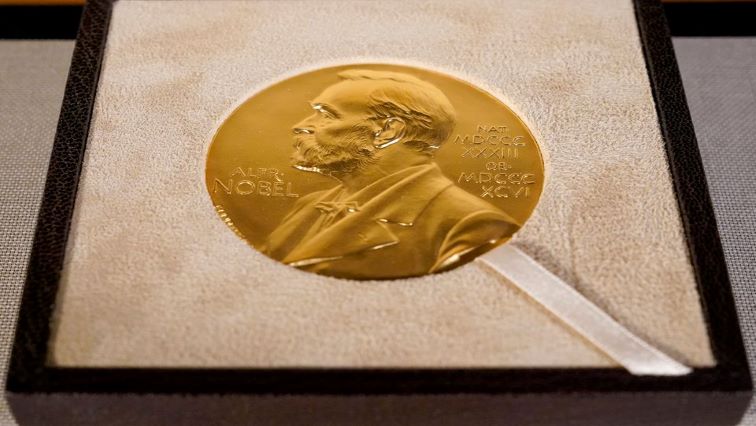The Royal Swedish Academy of Sciences has on Wednesday morning decided to award the 2022 Nobel Prize in Chemistry in equal shares to Carolyn Bertozzi, Stanford University, California, USA, Morten Meldal, University of Copenhagen, Denmark and to Barry Sharpless, Scripps Research, La Jolla, California, USA. They receive the prize for the development of click chemistry and bioorthogonal chemistry.
“Thank you so much, all of you. I’m absolutely stunned. I’m sitting here and can hardly breathe,” says Carolyn Bertozzi.
“You know, to my mind, the two types of applications that I think are really making a lot of impact are, first of all the use of bioorthogonal chemistry as a biological discovery tool to discover new kinds of bio-molecules that we didn’t even know existed because we have a new way to look at them. And then the other important area of impact is in medicine and in particular for drug delivery, which is doing chemistry inside human patients to make sure that drugs go to the right place and stay away from the wrong place,” explains Bertozzi.
Member of the Nobel committee and professor in medical biochemistry at Gothenburg University, Claes Gustafsson says this prize is about a new way of making large, complex molecules and also materials,I mean it’s about looking at chemistry like it would be Lego.
“So you have sort of pieces that you can put together rather than sort of looking at this chemical structure and thinking ‘where should I begin?’ you sort of have pieces that you can sort of glue together in a very simple way. And this is what click chemistry is and this is what click refers to is this that you just click things together and build up something that’s bigger,” says Gustafsson.
“So it’s important because you can say that this modular way of thinking makes it easier for the general scientist to actually use this tool of organic chemistry,” says Gustafsson.
“One application that people are looking at now is to actually take antibodies that recognize cancer cells and then click on to those antibodies radio chemicals sort of radioactive compounds that will sort of kill the cancer cells specifically,” says a member of the Nobel Committee and PR.
Scientists Carolyn Bertozzi, Morten Meldal and Barry Sharpless won the 2022 Nobel Prize in Chemistry on Wednesday 5 October for discovering reactions that let molecules snap together to create new compounds and that offer insight into cell biology.
The technologies known as click chemistry and bioorthogonal chemistry are now used around the world “to explore cells and track biological processes,” the award-giving body said in a statement.
The prize was awarded by the Royal Swedish Academy of Sciences and is worth 10 million Swedish crowns ($915,072 approx.).
The third of the prizes unveiled over six consecutive weekdays, the chemistry Nobel follows those for medicine and physics announced earlier this week.
Elite band of scientists
Sharpless joins an elite band of scientists who have won two Nobel prizes. The other individuals are John Bardeen who won the Physics prize twice, Marie Curie, who won Physics and Chemistry, Linus Pauling who won Chemistry and Peace and Frederick Sanger who won the Chemistry prize twice.
“I’m absolutely stunned, I’m sitting here and I can hardly breathe,” Bertozzi said from California after the academy reached her by telephone with the news she had won.
She added that as part of her work, she and her team managed to visualise and understand cell surface structures known as glycans, leading to a new idea in cancer immune therapy.
Bertozzi works at Stanford University, Sharpless works at the Scripps Research Institute, both in California, while Meldal is at the University of Copenhagen, Denmark.
Member of the Nobel committee and professor in medical biochemistry, Claes Gustafsson, described click-chemistry to build complex structures and link them together as if they were pieces of Lego, the Danish plastic construction toy.
“So you have sort of pieces that you can put together rather than sort of looking at this chemical structure and thinking ‘where should I begin?’ you sort of have pieces that you can sort of glue together in a very simple way. And this is what click chemistry is and this is what click refers to is this that you just click things together and build up something that’s bigger,” explain Gustafsson.
BREAKING: Nobel Prize for chemistry awarded to three scientists for “snapping molecules together” to create materials. https://t.co/AdwDCWmINS
— The Associated Press (@AP) October 5, 2022
The prizes for achievements in science, literature and peace were established in the will of Swedish dynamite inventor and businessman Alfred Nobel, himself a chemist, and have been awarded since 1901. Economics was added later.
The prizes have been awarded every year with a few interruptions, primarily for the world wars and made no break for the COVID-19 pandemic though much of the pageantry and events were put on hold or temporarily moved online.
History of the Nobel Peace Prizes: Ami Larsson-Jain


